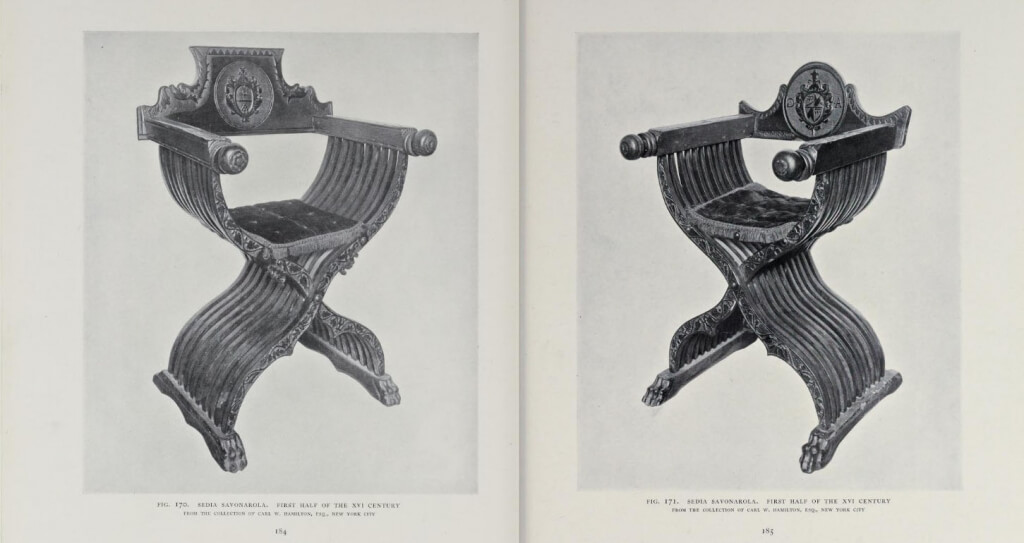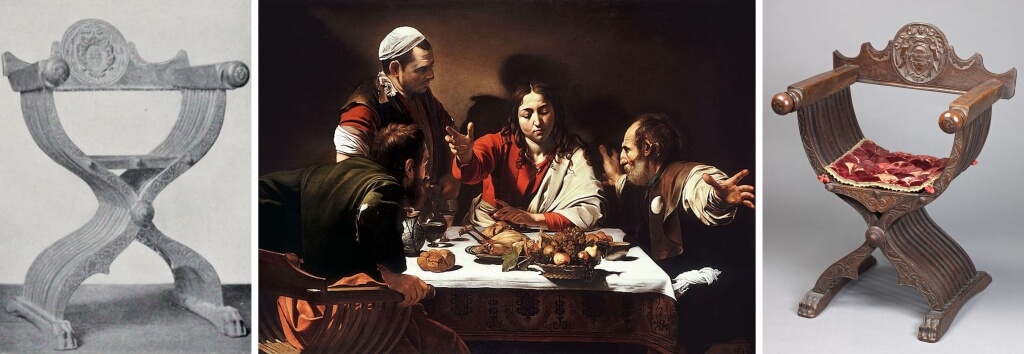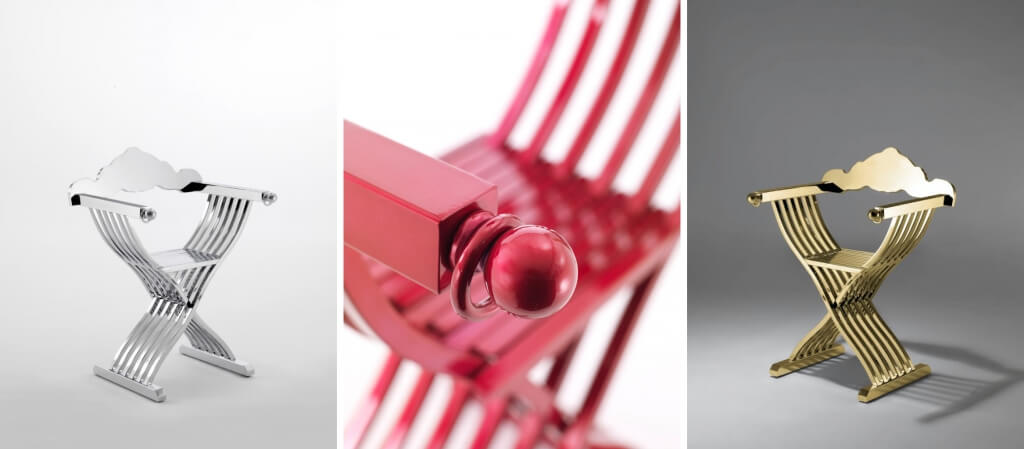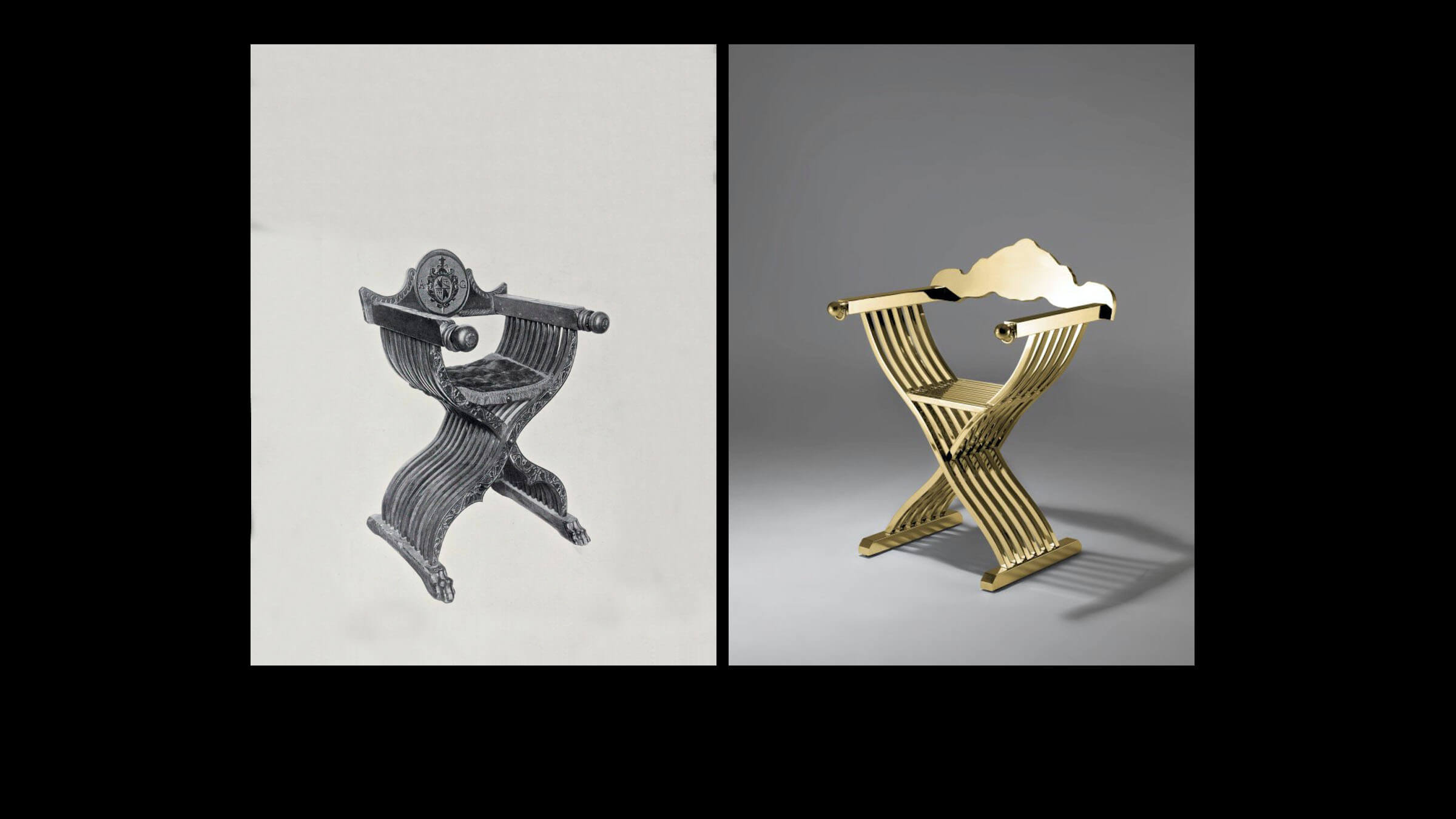Perhaps we have hipsters to thank, or maybe we’re just grasping at the past as the world seems to be spinning ever faster – either way, recent years have seen a rediscovery of “retro” and “vintage” in everything from fashion to music and styles of cooking. Likewise, heritage furniture designs are more popular than ever, and everyone wants their carefully curated interior items to tell a tale.
With a story dating back centuries – long before the Italian Renaissance gave formal expression to it – the iconic Savonarola chair is certainly one such piece.
A Signature Seat
For the uninitiated, the Savonarola chair is a type of folding seat, complete with back and arm rests, whose structure is made up of several wooden slats overlapping to form an X shape. The chair rests on base rails, often ending with lion claw feet.

Despite tracing its origins back to the ancient sella curulis (“curule chair”, supposedly from currus or “chariot”) used by the most influential figures of the Roman Republic, the Savonarola armchair only got its name in the 19th century – from a 15th-century Dominican friar named Girolamo Savonarola (1452 – 1498), whose “Savonarola” chair still sits in his chamber in San Marco convent in Florence.
A critic of the corruption and perceived immorality of the established Church at the time, Savonarola preached penitence as the only path to salvation, displaying his disgust at any sort of luxury by organising bonfires in which items – piles of books or artworks stigmatised as symbols of sin – were gathered and publicly burned, sometimes by the thousands. Somewhat ironically, Savonarola would meet his own end by fire (burned at the stake for heresy) and later lend his name to one of the very things he hated most: a symbol of status and luxury.
Status symbol? That’s right, because the curule chair from which the designed is derived once served as the seat upon which powerful Roman magistrates were entitled to sit; in fact, the only decisions regarded as lawful were those given from this chair, as ratification of power. The seat was also practical, because it could be folded and thus was easily moveable – an especially important feature on the battlefield, where time and speed were of the essence.
In the Middle Ages, the political use of the not-yet-christened Savonarola chair gave way to a religious one, as the medieval faldistorium (modelled on the Germanic word faldastôl, or “folding chair”) emerged onto the scene. As indicated by its very name, the major advantage of this seat is clear: though not used in combat zones, the chair’s portability was crucial in ceremonial occasions when displacing the ecclesiastical throne was impossible, and a replacement was needed. Across the ages (particularly during the 16th century), the function-over-form element was replaced by a tendency toward ornamentation, like intricate carvings and lavish upholstery.

Yet another disappointment for Savonarola, even from beyond the grave.
A Modern Take
In the 19th century, having acquired its name from the seats found in the convent where its namesake lived, the Savonarola chair went out of fashion. “Roman” taste in general lost its appeal, and so did the curule seat, replaced by more comfortable but far less portable high-back armchairs. Still, the 20th century would see furniture designers return again and again to the iconic Savonarola chair to devise magnificent updates, such as Mies van der Rohe’s Barcelona Chair (1929), Harvey Probber and his scissor chair (known as Probber Chairs), as well as Elsie de Wolfe, considered America’s first professional female interior decorator, whose wrought iron X-shaped stool casts the design in a more glamorous light.
More recently, a captivating modern revamp of the Savonarola armchair took shape thanks to Ferroecò, a small artisanal design company outside of Milan run by entrepreneur-craftsman duo Sara Di Terlizzi and Marcello Livecchi. Their “Girolamo” armchair, made entirely of iron instead of wood, is a stunning, fresh take on this age-old design.

Their contemporary version remains true to the original in general shape and other minor details, while making a modern statement with the minimalist design of the backrest – whose smooth surface and undulating edges manage to evoke both the austerity and grandeur of Savonarola designs throughout the centuries.
Available in white, chrome, iridescent red or even plated in 18-karat gold, the Girolamo chair invites the aesthetic of the Savonarola style into the present – without getting stuck in the past.














Sorry, the comment form is closed at this time.